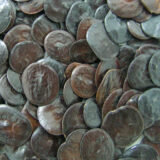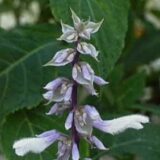Defining Ayahuasca: What it is and How it is Made
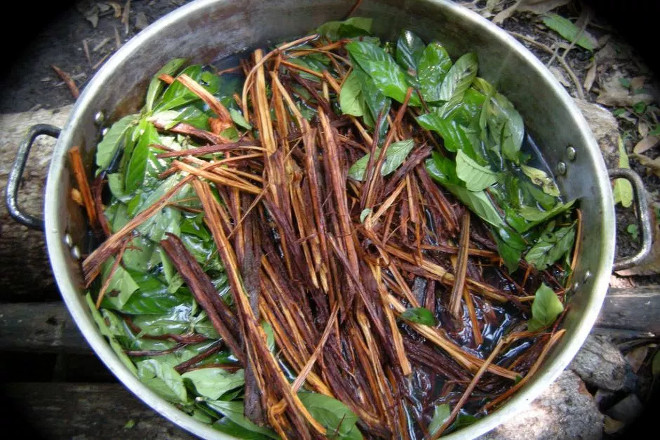
Ayahuasca Definition and General Terminology
Ayahuasca is the word that has been used most widespread, traditionally for a psychedelic Amazon vine. In modern times, it is a blanket name that can refer to a variety of drinks prepared from traditional Amazon recipes. Usually the drink contains many ingredients, however, the most popular dominant hallucinogen in an ayahuasca preparation is Banisteriopsis caapi. This plant is native to the Amazon and some parts of South America. It is a vine that has been known to be hallucinogenic. It is important to remember when reading about Ayahuasca, that sometimes people refer to the primary ingredient, Banisteriopsis caapi itself, as ayahuasca. The term is also sometimes used to describe the very many ornamental or decorative creations that have been made from the vine.
Ayahuasca has many purposes, some traditional and some more modern. It has been used as a medicine for many ailments. It is very commonly found in a number of religious ceremonies. It is used by shamans and priests for many spiritual purposes. People use it for self-exploration. It is also used for recreation.
History of the Traditional Ayahuasca Drink and Folklore
Historically, ayahuasca has been prepared and used throughout the Amazon. Almost all tribes in the region, and even throughout South America, have heard of or even had an experience with ayahuasca. Many of the Indians and natives of the Amazon region refer to ayahuasca in common terms simply as “la purga.” La purga translates to “the purge,” and it is rightfully associated with ayahuasca for its experience to make a body and mind feel completely renewed and rejuvenated post – experience. It also gains this name from its ability to create an irresistible urge to vomit.
Most traditional medicinal uses recognized the spiritual capabilities of the drink. Native medicine men of many tribes considered the separation of body and mind that was experienced on ayahuasca as a powerful asset; thus, ayahuasca has been employed as a cleansing drink, a “soul awakening” and self-exploration tool, to help with grieving, and for many other medicinal purposes. Shaman of many tribes also used the drink to induce visions for prophecy or other divination. There are shaman and priests who have used ayahuasca to help conquer demons, tying greatly into the belief that ayahuasca is a cleansing drink. In fact, most natives believe that ayahuasca cleanses the entire mind, body, and soul.
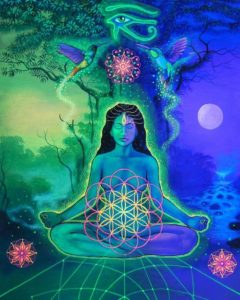 Was Ayahuasca a Gift to a Maiden of the Amazon?
Was Ayahuasca a Gift to a Maiden of the Amazon?
One legend that explains the birth of ayahuasca is the tale of a beautiful maiden of the Amazon. She would visit a river each morning to wash and bathe. She used Chakruna leaves (high DMT content) to rub on her skin for their soft feel and the soothing properties they provided. After many days of her singing and praising how beautiful the leaves made her feel, the Chakruna plant began talking to her, explaining it new a secret unknown to any other human being that it wish to share with her for how nice she had been to the plant. The Chakruna bush told her that the nearby vine (which turned out to be Banisteriopsis caapi) could be mixed with the Chakruna leaves in a heated brew for a few hours to produce a substance which would unlock spiritual doors and help her fully explore her mind. Furthermore the drink was supposed to cure all ailments, ease all pain, and heal all aches. The drink is also supposed to reveal the secrets of the jungle.
Did the First Ayahuasca Come From a Dead Person?
Another tale of ayahuasca’s origination comes from a village deep within the Amazon, where a powerful medicine man lived. Although this medicine man had an abundance of knowledge, he still remained unsatisfied. After long consideration, he decided to dedicate his life to finding deepest, most valuable secret of the Amazon jungle. After explaining his intentions to his village, he ventured into the jungle and found a tree he was spiritually drawn to. He sat by this tree and began to meditate.
Days went by and he remained motionless, absolutely loyal to his cause. He remained meditating and praying, determined not to leave or be disturbed until he found the most precious secret of the jungle. His wife and other people of the village brought him water and food, which all went to waste or were consumed by dogs. No matter who urged this determined medicine man, he remained unresponsive, and dedicated to his meditation by the tree.
One day, the villagers returned to find him deceased. His wishes were to leave his body alone by the tree, undisturbed indefinitely, should he have passed away. The villagers respected his wishes, leaving his body to rot at the base of the tree. They returned sometime later to find the body had sprouted amazing vines which had begun climbing up the tree. These vines are believed to be the first Banisteriopsis caapi vines, and began the use of the vine to create the hallucinogenic concoction.
Modern Ayahuasca Use
Ayahuasca is still used in modern times today. There are traditional tribes all throughout the Amazon and surrounding area, who still employee the sacred drink for its medicinal and spiritual properties. There is also a strong Western culture demand for the drink, however it is typically from the perspective of self-exploration and recreational use. Though, there are a few “ayahuasca retreats” available throughout the United States and many other countries around the world, which focus on a traditional ayahuasca ceremony and experience. A lot of times modern preparations of the drink are technically completed using ayahuasca analogues, as geographical restrictions (legality of certain plants, ability to import and export, and availability of endangered species) have made the exact traditional preparations much harder to pull off.
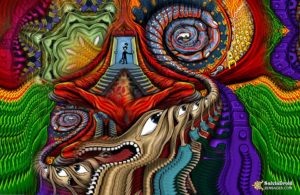 How Does Ayahuasca Work?
How Does Ayahuasca Work?
DMT, also known as N,N-dimethyltryptamine, is usually only considered an active hallucinogen (when ingested orally), when it is combined with an MAOI. This is why Banisteriopsis caapi is so important to the Ayahuasca drink, as it activates otherwise “dormant” hallucinogens. MAOIs help eliminate most of the action of the MAO enzyme, which normally would break down and disrupt the proper absorption and effects of DMT. By ingesting an MAOI along with DMT, a full psychedelic experience can be initiated. The ayahuasca drink is made by combining MAOIs (like Banisteriopsis caapi), with DMT containing plants (sometimes more than one).
Many experienced ayahuasca drinkers have taken note of the slightly different, varying effects that are produced from using different precursors. Some of the plants used for their DMT content in the ayahuasca drink also produce some undesirable side effects, sometimes which can even be counteracted with additional ingredients (hence many ayahuasca recipes involving a larger cocktail of plants, rather than just two). So while there may be some plants that seem like excellent ayahuasca analogues, there may be reasons as to why the traditional recipe has gravitated towards the most popularly used ingredients.
What is Ayahuasca Made From?
Banisteriopsis caapi is often considered the most common primary ingredient in an ayahuasca drink. There is a reason as to why this vine was selected over the very many species of vines native to the Amazon rain forest. Chemically speaking, this vine possesses beta-carboline harmala alkaloids, as well as monoamine oxidase inhibitors (MAOIs). The drink is not complete, however, from only this vine, and the true hallucinogenic effects come from including other plants that are high in DMT content into the drink. There are a few plants which are most commonly selected for their high content of DMT including: Psychotria viridis (also known as “Chakruna”) and Diplopterys cabrerana (also known by “chagropanga”).
It is important to note that the DMT containing plants, and even sometimes the MAOIs, which are used to make an ayahuasca drink are sometimes different depending upon the plants available in the geographical region. When substitute ingredients are used in the preparation of an ayahuasca drink, they are often referred to as “ayahuasca analogues.” The term ayahuasca analog can refer to both MAOIs and DMT ingredients.
Some of the most common Ayahuasca analogs that are MAOIs include:
- Passionflower
- Syrian Rue (Peganum harmala)
- Yohimbe
Some of the most common ayahuasca analogues that are used for their high DMT content include:
- Anadenanthera peregrina
- Mimosa hostilis
- Virola elongata
Sometimes people prepare ayahuasca substitute drinks around the world using ingredients which do not grow in the Amazon at all. It is possible to create a very similar ayahuasca experience from ingredients which do not grow in the Amazon, so long as one ingredient contains high quantities of DMT, and the other is a strong MAOI. Sometimes multiple sources of each or either are included in an Ayahuasca drink preparation.
Final Notes on Having a Safe Ayahuasca Trip
Everyone experiences ayahuasca differently, however, it is most certainly best experienced with a traditional (or as close as possible to traditional) preparation and ceremony. Ayahuasca can take a long time to prepare for, as the traditional use involves weeks of activity before actually ingesting the drink (body cleanses, meditation, etc.). There are many experts on ayahuasca whom are happy to walk amateurs through the traditional use. These guides are typically the best way to guarantee a good ayahuasca experience. And remember: ayahuasca is prepared many ways, even a slight change in ingredient, can also make for a totally different experience.
Disclaimer: Botanical Shaman does not condone illegal drug use and cannot be responsible for any spiritual journeys of any kind.


